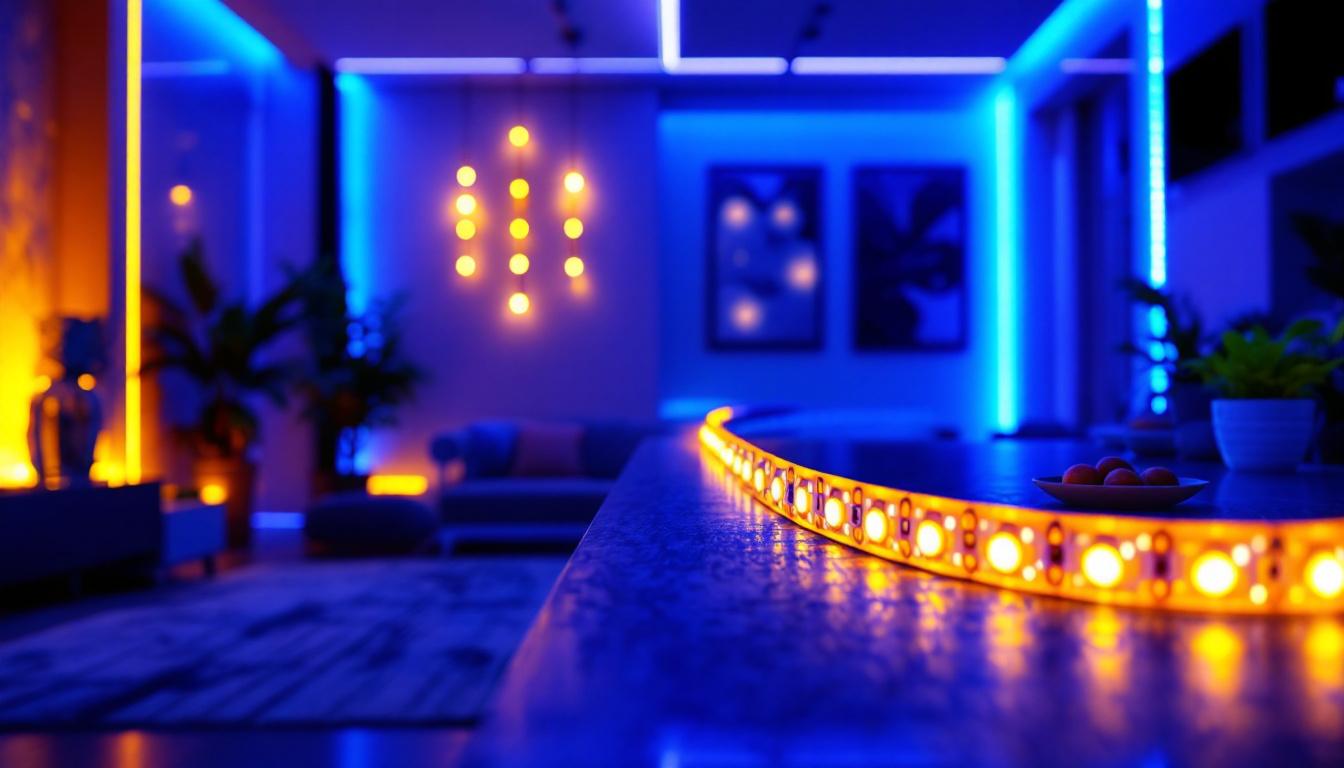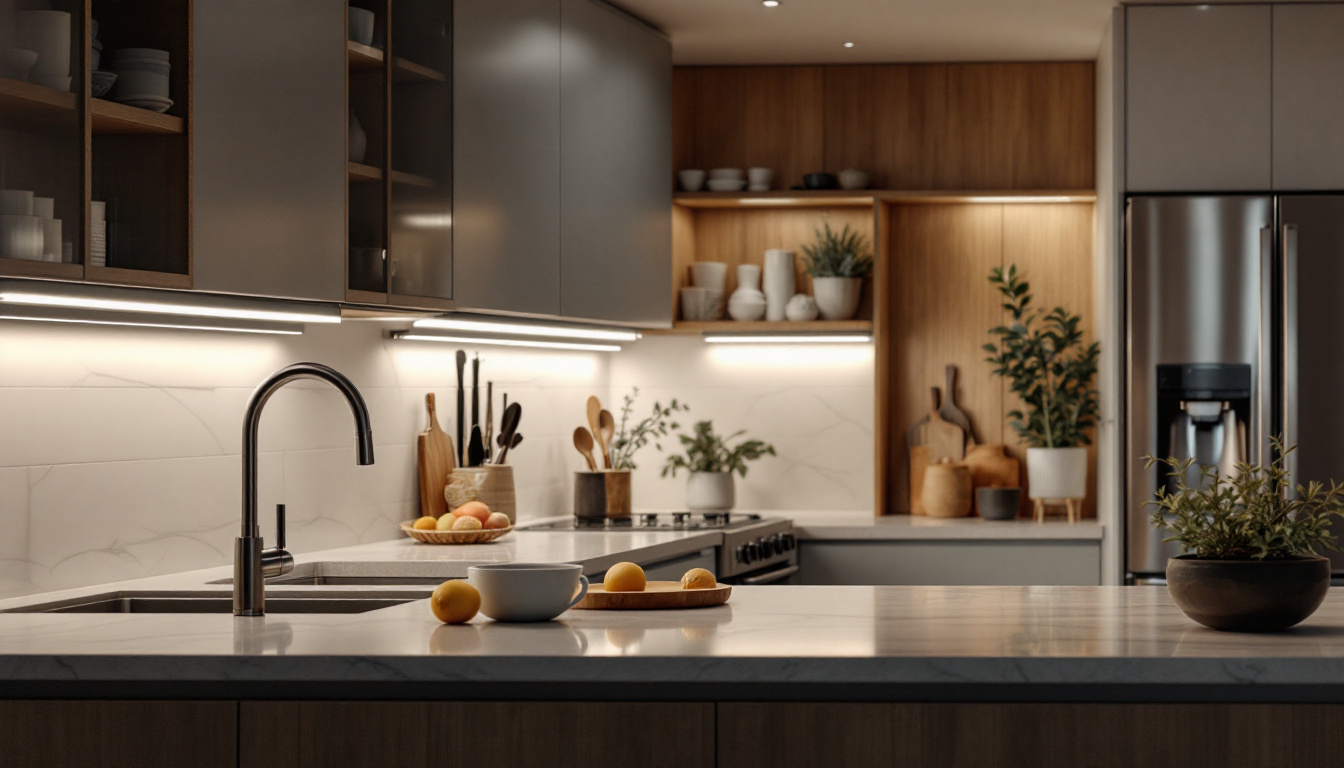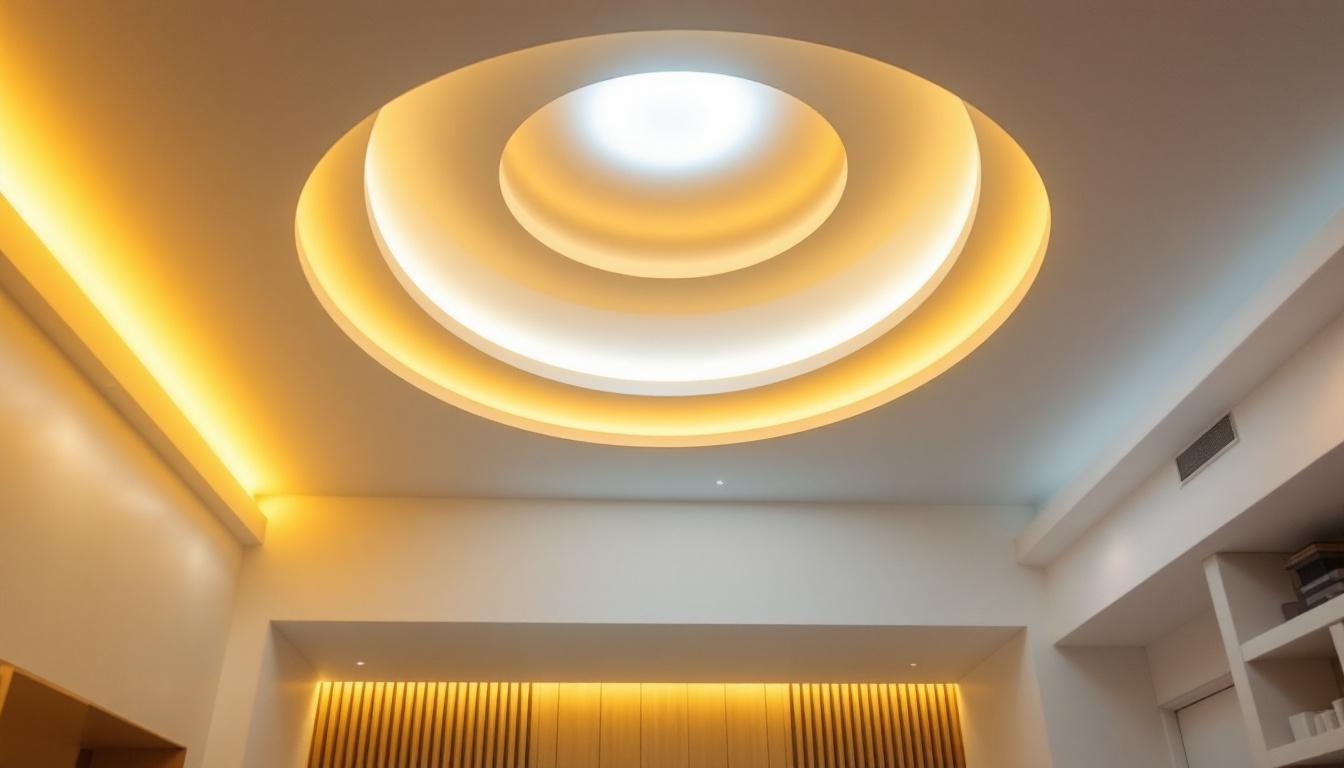
In the ever-evolving world of lighting solutions, flexible LED strips have emerged as a game-changer for contractors and designers alike. Their versatility, efficiency, and ease of installation make them an essential component in modern lighting installations. This article delves into the significance of flexible LED strips, exploring their applications, benefits, and the reasons they are becoming a staple in both residential and commercial projects.
Flexible LED strips, often referred to as LED tape, are thin circuit boards that are embedded with light-emitting diodes (LEDs). They are designed to be easily bent and shaped, allowing for creative lighting solutions that traditional fixtures cannot provide. This adaptability makes them suitable for a wide range of applications, from accent lighting to full-scale illumination.
The construction of flexible LED strips typically includes a flexible circuit board, a series of LEDs, and an adhesive backing. This design allows for easy installation on various surfaces, including walls, ceilings, and furniture. The flexibility of the strip enables it to conform to different shapes and angles, making it ideal for intricate designs.
Moreover, the LEDs used in these strips come in various colors and brightness levels, offering contractors the ability to customize lighting solutions according to the specific needs of a project. With options for color temperature and RGB capabilities, flexible LED strips can create dynamic lighting effects that enhance the overall ambiance of a space. Additionally, many strips are available with features such as dimming capabilities and remote control options, providing further versatility in how they can be used to set the mood or highlight specific areas.
Flexible LED strips are incredibly versatile and can be used in numerous applications. In residential settings, they are commonly employed for under-cabinet lighting, cove lighting, and accent lighting in living areas. Their ability to provide soft, diffused light makes them perfect for creating a warm and inviting atmosphere.
In commercial environments, flexible LED strips are often utilized for signage, display lighting, and architectural features. Their low profile and ease of installation allow for seamless integration into various design elements, making them a preferred choice for retail spaces, restaurants, and office buildings. Beyond these typical uses, they can also be found in innovative applications such as backlighting for televisions, creating a halo effect that enhances the viewing experience, or even in automotive lighting, where they can be used to illuminate footwells or accentuate the vehicle’s interior design. This adaptability not only showcases the strips’ functionality but also their ability to transform any space into a visually stunning environment.
The benefits of incorporating flexible LED strips into lighting installations are numerous. From energy efficiency to ease of installation, these strips provide advantages that can significantly impact both the contractor’s workflow and the end user’s experience.
One of the most compelling reasons to use flexible LED strips is their energy efficiency. LEDs consume considerably less power than traditional incandescent or fluorescent bulbs, leading to lower energy bills and a reduced carbon footprint. This efficiency is particularly beneficial in large installations where multiple light sources are required.
Additionally, flexible LED strips have a longer lifespan compared to traditional lighting options. This longevity means fewer replacements and maintenance, ultimately saving contractors and clients time and money in the long run.
Flexible LED strips are designed for quick and easy installation. Their adhesive backing allows them to be applied directly to surfaces without the need for additional mounting hardware. This feature not only speeds up the installation process but also reduces labor costs for contractors.
Furthermore, the strips can be cut to length, enabling contractors to customize the installation to fit specific areas without waste. This flexibility in installation is particularly advantageous in complex designs where precise measurements are essential.
The versatility of flexible LED strips allows for creative lighting solutions that can transform any space. They can be used to highlight architectural features, create ambient lighting, or even serve as functional task lighting. The ability to choose from various colors and brightness levels means that contractors can tailor the lighting to meet the unique needs of each project.
Moreover, the strips can be integrated with smart home technologies, allowing for advanced control options such as dimming, color changing, and scheduling. This integration enhances the user experience and adds value to the installation.
With a plethora of options available in the market, selecting the right flexible LED strip for a project can be daunting. However, understanding the key factors to consider can simplify the decision-making process.
When choosing a flexible LED strip, it is crucial to consider the brightness and color temperature required for the specific application. The brightness is measured in lumens, and selecting a strip with the appropriate lumen output ensures that the lighting meets the desired effect.
Color temperature, measured in Kelvin, affects the ambiance of a space. Warmer temperatures (2700K-3000K) create a cozy atmosphere, while cooler temperatures (4000K-5000K) are more suitable for task-oriented areas. Understanding the intended use of the space will help in selecting the right color temperature.
Flexible LED strips typically operate on either 12V or 24V power supplies. It is essential to match the strip with the appropriate power supply to ensure optimal performance. Contractors should also consider the total wattage of the strips being used to prevent overloading the power supply.
Additionally, using a power supply with a built-in dimmer can enhance the versatility of the lighting installation, allowing for adjustable brightness levels to suit different moods and activities.
For installations in areas exposed to moisture or dust, it is vital to select flexible LED strips with an appropriate Ingress Protection (IP) rating. An IP rating indicates the level of protection against solids and liquids, ensuring the longevity and reliability of the lighting solution.
Contractors should also consider the environmental impact of the materials used in the strips. Opting for products that are free from harmful substances and are recyclable can contribute to a more sustainable installation.
Proper installation is key to maximizing the performance and longevity of flexible LED strips. Here are some essential tips for contractors to consider during the installation process.
Before applying the flexible LED strips, it is crucial to prepare the surface adequately. Ensure that the surface is clean, dry, and free from dust or debris, as this will enhance the adhesion of the strip. For surfaces that may be challenging to adhere to, using additional mounting clips or brackets can provide extra support.
Planning the layout of the flexible LED strips before installation can save time and ensure a more professional finish. Contractors should take measurements and sketch a layout to visualize where the strips will be placed. This planning phase allows for adjustments and ensures that the strips are installed in a way that maximizes their effectiveness.
It is advisable to test the flexible LED strips before finalizing the installation. This step ensures that all connections are secure and that the strips function as intended. Testing can help identify any issues early on, allowing for adjustments before the installation is completed.
The technology behind flexible LED strips continues to evolve, with new advancements enhancing their capabilities and applications. Staying informed about these trends can help contractors remain competitive in the industry.
As smart home technology becomes increasingly prevalent, the integration of flexible LED strips with smart systems is on the rise. This integration allows for enhanced control over lighting, enabling users to adjust brightness, color, and even create lighting schedules through mobile applications or voice commands.
Contractors who embrace smart lighting solutions can offer clients more sophisticated and customizable installations, catering to the growing demand for intelligent home environments.
Ongoing research and development in LED technology are leading to even more energy-efficient solutions. Future flexible LED strips may consume less power while providing higher lumen output, further reducing energy costs for users.
Contractors should keep an eye on emerging technologies that promise to enhance the energy efficiency of lighting solutions, as this can be a significant selling point for clients focused on sustainability.
Future flexible LED strips may incorporate innovative design features, such as advanced color-changing capabilities and dynamic lighting effects. These enhancements can create immersive environments that respond to user preferences and activities, opening up new possibilities for creative installations.
By staying ahead of design trends, contractors can provide clients with cutting-edge solutions that elevate their spaces and enhance the overall experience.
Flexible LED strips have become a critical component in modern lighting installations, offering unparalleled versatility, energy efficiency, and ease of installation. Their ability to adapt to various applications makes them an invaluable tool for lighting contractors looking to meet the diverse needs of their clients.
By understanding the benefits, choosing the right products, and staying informed about industry trends, contractors can leverage flexible LED strips to create innovative and effective lighting solutions. As technology continues to advance, the role of flexible LED strips in lighting design is only expected to grow, making them an essential element in the future of lighting installations.
Ready to transform your lighting installations with the versatility and efficiency of flexible LED strips? Look no further than LumenWholesale for all your lighting needs. Our extensive selection of spec-grade lighting products comes at unbeatable wholesale prices, ensuring you get the best value for your investment. Say goodbye to inflated markups and hello to high-performance lighting that meets the highest industry standards. Plus, with free shipping on bulk orders, you can stock up on premium lighting solutions without worrying about hidden fees. Elevate your lighting projects today by visiting Wholesale Lighting at the Best Value and experience the LumenWholesale difference.

Discover how cabinet LED lights are revolutionizing the work of lighting contractors by enhancing efficiency, reducing energy costs, and offering versatile design options.

Discover why ceiling light coves are essential for lighting contractors in this insightful article.

Discover the insider secrets of lighting contractors as they unveil the best practices for mastering commercial outdoor LED lighting.

Discover how understanding hanging lamp parts can revolutionize the work of lighting contractors.